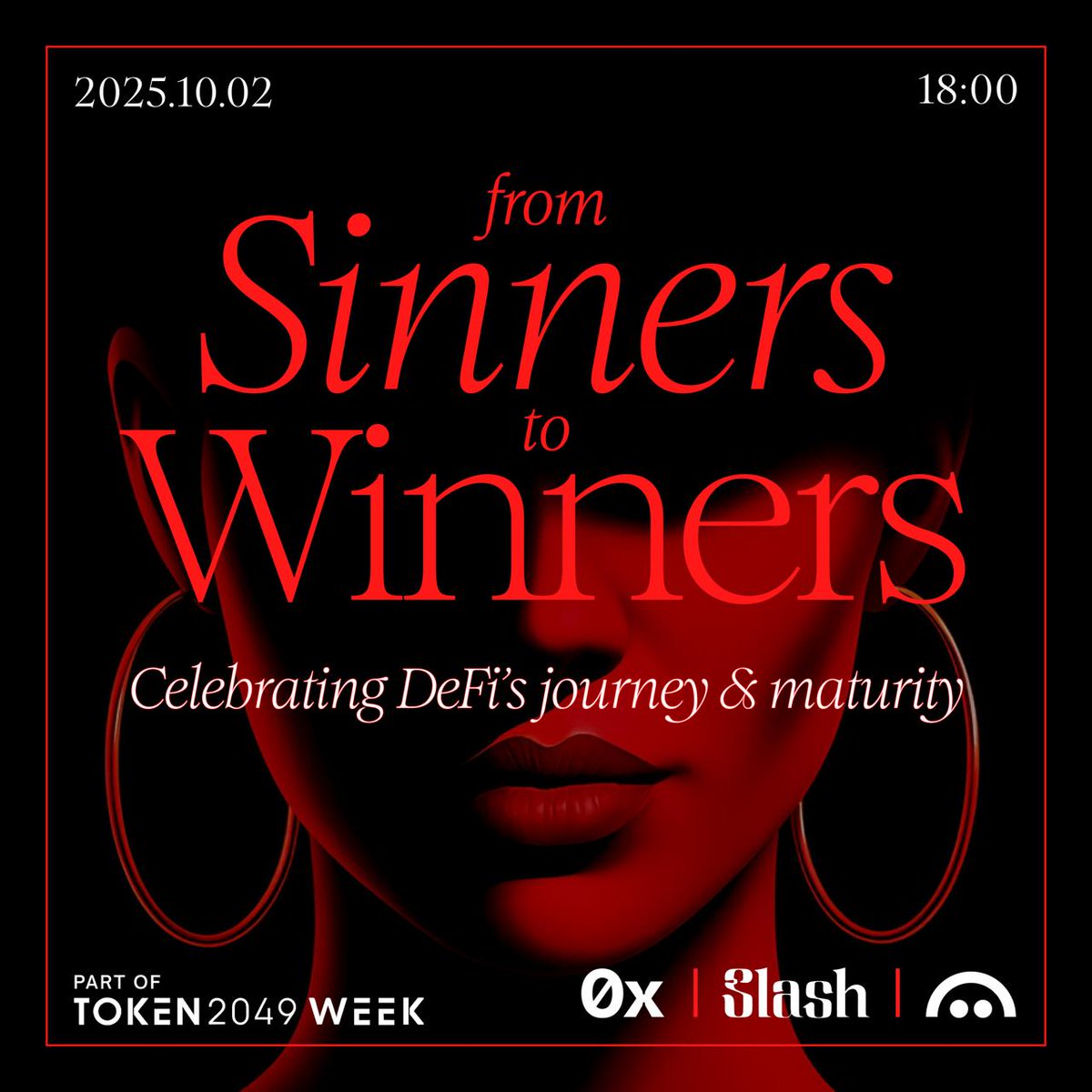Cena 0x
w BRLR$1,445
-R$0,0005312 (-0,04%)
BRL
Nie możemy go znaleźć. Sprawdź pisownię lub spróbuj użyć innego słowa.
Kapitalizacja rynkowa
R$1,23 mld
Podaż w obiegu
848,4 mln / 1 mld
Najwyższa w historii
R$13,81
Wolumen z 24 godz.
R$81,50 mln
3.8 / 5


Informacje o 0x
DeFi
Warstwa 2

Ostatni audyt: 14 maj 2021, (UTC+8)
Zastrzeżenie
Treści społecznościowe na tej stronie („Treści”), w tym między innymi tweety i statystyki dostarczane przez LunarCrush, pochodzą od stron trzecich i są dostarczane „tak jak są” wyłącznie w celach informacyjnych. OKX nie gwarantuje jakości ani dokładności Treści, a Treści nie reprezentują poglądów OKX. Nie mają one na celu (i) doradztwa inwestycyjnego lub rekomendacji; (ii) oferty lub zachęty do kupna, sprzedaży lub posiadania aktywów cyfrowych; lub (iii) doradztwa finansowego, księgowego, prawnego lub podatkowego. Aktywa cyfrowe, w tym stablecoiny i NFT, wiążą się z wysokim stopniem ryzyka i mogą podlegać znacznym wahaniom. Cena i wyniki aktywów cyfrowych nie są gwarantowane i mogą ulec zmianie bez powiadomienia.
OKX nie udziela rekomendacji dotyczących inwestycji ani aktywów. Musisz dokładnie rozważyć, czy handel lub posiadanie aktywów cyfrowych jest dla Ciebie odpowiednie w świetle Twojej sytuacji finansowej. W przypadku pytań dotyczących konkretnej sytuacji skonsultuj się ze swoim doradcą prawnym, podatkowym lub specjalistą ds. inwestycji. Aby uzyskać więcej informacji, zapoznaj się z warunkami użytkowania i ostrzeżeniem o ryzyku. Korzystając z witryny internetowej strony trzeciej („TWP”), akceptujesz, że wszelkie korzystanie z TPW będzie podlegać warunkom TPW i będzie regulowane przez te warunki. O ile nie zostało to wyraźnie określone na piśmie, OKX i jego podmioty stowarzyszone („OKX”) nie są w żaden sposób powiązane z właścicielem lub operatorem TPW. Zgadzasz się, że OKX nie ponosi odpowiedzialności za jakiekolwiek straty, szkody i inne konsekwencje wynikające z korzystania z TPW. Pamiętaj, że korzystanie z TPW może spowodować utratę lub zmniejszenie Twoich aktywów. Produkt może nie być dostępny we wszystkich jurysdykcjach.
OKX nie udziela rekomendacji dotyczących inwestycji ani aktywów. Musisz dokładnie rozważyć, czy handel lub posiadanie aktywów cyfrowych jest dla Ciebie odpowiednie w świetle Twojej sytuacji finansowej. W przypadku pytań dotyczących konkretnej sytuacji skonsultuj się ze swoim doradcą prawnym, podatkowym lub specjalistą ds. inwestycji. Aby uzyskać więcej informacji, zapoznaj się z warunkami użytkowania i ostrzeżeniem o ryzyku. Korzystając z witryny internetowej strony trzeciej („TWP”), akceptujesz, że wszelkie korzystanie z TPW będzie podlegać warunkom TPW i będzie regulowane przez te warunki. O ile nie zostało to wyraźnie określone na piśmie, OKX i jego podmioty stowarzyszone („OKX”) nie są w żaden sposób powiązane z właścicielem lub operatorem TPW. Zgadzasz się, że OKX nie ponosi odpowiedzialności za jakiekolwiek straty, szkody i inne konsekwencje wynikające z korzystania z TPW. Pamiętaj, że korzystanie z TPW może spowodować utratę lub zmniejszenie Twoich aktywów. Produkt może nie być dostępny we wszystkich jurysdykcjach.
Wydajność ceny 0x
Ostatni rok
-1,20%
R$1,46
3 miesiące
+23,12%
R$1,17
30 dni
+12,71%
R$1,28
7 dni
-0,52%
R$1,45
0x na mediach społecznościowych
Przewodniki
Dowiedz się, jak kupić 0x
Rozpoczęcie przygody z kryptowalutami może wydawać się przytłaczające, ale nauka, gdzie i jak kupować kryptowaluty, jest prostsze niż mogłoby się wydawać.
Przewiduj ceny 0x
Jaka będzie wartość 0x w ciągu kilku następnych lat? Sprawdź opinie społeczności i wykonaj swoje prognozy.
Wyświetl historię cen 0x
Śledź historię cen 0x, aby monitorować wyniki swoich aktywów w czasie. Z łatwością możesz przeglądać wartości otwarcia i zamknięcia, wartości maksymalne, wartości minimalne oraz wolumen obrotu, korzystając z poniższej tabeli.

Własne 0x w 3 krokach
Utwórz bezpłatne konto OKX.
Zasil swoje konto.
Wybierz swoją kryptowalutę.
Najczęściej zadawane pytania 0x
Obecnie jeden 0x jest wart R$1,445. Aby uzyskać odpowiedzi i wgląd w akcję cenową 0x, jesteś we właściwym miejscu. Przeglądaj najnowsze wykresy 0x i handluj odpowiedzialnie z OKX.
Kryptowaluty, takie jak 0x, to aktywa cyfrowe, które działają w publicznym rejestrze zwanym blockchainem. Dowiedz się więcej o monetach i tokenach oferowanych na OKX oraz ich różnych atrybutach, w tym o cenach na żywo i wykresach w czasie rzeczywistym.
Dzięki kryzysowi finansowemu z 2008 r. zainteresowanie zdecentralizowanymi finansami wzrosło. Bitcoin oferował nowatorskie rozwiązanie, zapewniając bezpieczne aktywa cyfrowe w zdecentralizowanej sieci. Od tego czasu powstało również wiele innych tokenów, takich jak 0x.
Sprawdź nasze Strona z prognozą cen 0x, aby prognozować przyszłe ceny i określić swoje cele cenowe.
Pogłąb wiedzę o 0x
0x (ZRX) to protokół pozwalający na zdecentralizowaną wymianę tokenów i aktywów emitowanych na blockchainie Ethereum. Programiści mogą wykorzystać 0x do tworzenia własnych aplikacji do giełd kryptowalut z szerokim zakresem funkcji, na przykład możliwością prowadzenia pozagiełdowego handlu tokenami emitowanymi na blockchainie Ethereum. Tokeny ZRX służą do wdrażania zdecentralizowanego zarządzania protokołem 0x, który pozwala użytkownikom głosować na ulepszenia bazowych inteligentnych kontraktów.
Ujawnienie ESG
Przepisy ESG (środowiskowe, społeczne i ładu korporacyjnego) dla aktywów kryptowalutowych mają na celu uwzględnienie ich wpływu na środowisko (np. energochłonne kopanie), promowanie przejrzystości i zapewnienie etycznych praktyk zarządzania w celu dostosowania przemysłu kryptowalutowego do szerszego zrównoważonego rozwoju oraz celów społecznych. Przepisy te zachęcają do przestrzegania standardów, które ograniczają czynniki ryzyka i zwiększają zaufanie do aktywów cyfrowych.
Kapitalizacja rynkowa
R$1,23 mld
Podaż w obiegu
848,4 mln / 1 mld
Najwyższa w historii
R$13,81
Wolumen z 24 godz.
R$81,50 mln
3.8 / 5






